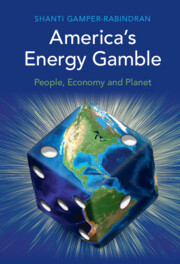Book contents
- America’s Energy Gamble
- Reviews
- America’s Energy Gamble
- Copyright page
- Dedication
- Contents
- Acknowledgments
- 1 Introduction
- Part I America’s Energy
- 2 Oil and Gas
- 3 Renewable Energy
- Part II America’s Lands
- Part III America’s Seas
- Part IV America’s Regulatory Process
- Part V The Global Climate
- 12 America at a Crossroads
- Index
- References
2 - Oil and Gas
The Quest for Energy Dominance
from Part I - America’s Energy
Published online by Cambridge University Press: 06 January 2022
- America’s Energy Gamble
- Reviews
- America’s Energy Gamble
- Copyright page
- Dedication
- Contents
- Acknowledgments
- 1 Introduction
- Part I America’s Energy
- 2 Oil and Gas
- 3 Renewable Energy
- Part II America’s Lands
- Part III America’s Seas
- Part IV America’s Regulatory Process
- Part V The Global Climate
- 12 America at a Crossroads
- Index
- References
Summary
Trump’s America First Energy Plan, which focuses on oil and gas expansion and rolling back regulations, promised to insulate the US economy from the volatile global oil market. In reality, the US shale oil industry, operating within the global oil markets, suffered contractions when oil supplier nations’ price wars caused global oil prices to crash. While the plan promised to bring Americans jobs and prosperity, predicating economic development on oil and gas extraction is a dubious strategy for several reasons. The shale industry, which contributed to the recent boom and expected future production, suffers from a shaky financial foundation. Even prior to COVID-19, traditional investors had begun cutting lending to shale companies and bankruptcies were accelerating. In March 2020, under Congress’s COVID-19 financial rescue package, the Trump administration executed a bailout for the oil and gas industry that shifted financial losses to American taxpayers without securing companies’ agreements to keep workers employed. The bailout replicates the decades-long economic model of the industry, which privatizes profits to the companies, while socializing the costs from the industry, through tax preferences and subsidies for the industry and through various laws that favor extraction over those that suffer from the industry’s adverse impacts.
Keywords
- Type
- Chapter
- Information
- America's Energy GamblePeople, Economy and Planet, pp. 17 - 57Publisher: Cambridge University PressPrint publication year: 2022

